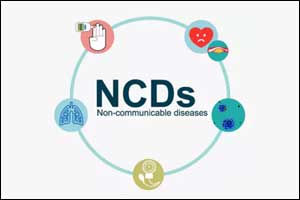- Home
- Editorial
- News
- Practice Guidelines
- Anesthesiology Guidelines
- Cancer Guidelines
- Cardiac Sciences Guidelines
- Critical Care Guidelines
- Dentistry Guidelines
- Dermatology Guidelines
- Diabetes and Endo Guidelines
- Diagnostics Guidelines
- ENT Guidelines
- Featured Practice Guidelines
- Gastroenterology Guidelines
- Geriatrics Guidelines
- Medicine Guidelines
- Nephrology Guidelines
- Neurosciences Guidelines
- Obs and Gynae Guidelines
- Ophthalmology Guidelines
- Orthopaedics Guidelines
- Paediatrics Guidelines
- Psychiatry Guidelines
- Pulmonology Guidelines
- Radiology Guidelines
- Surgery Guidelines
- Urology Guidelines
How to reduce Trans fats- worst fats in food supply

Dr. Lirije Hyseni and associates have published a Systematic review of dietary trans-fat reduction interventions in Bulletin of World Health Organisation.A mere 2 percent increase in calories from trans fats can raise the risk of coronary heart disease by as much as 29 percent. Substituting a healthy fat like extra-virgin olive oil or canola oil for those containing trans fats could prevent 30,000 to 100,000 premature deaths a year, the American Medical Association concluded in 2013.
Over two-thirds of the global burden of disability and death is attributable to noncommunicable diseases. Diseases such as cardiovascular diseases, common cancers, dementia, diabetes and respiratory disorders kill over 35 million people annually.The problem predominantly reflects an unhealthy global food environment dominated by processed foods high in sugar, salt, saturated fats and, crucially, industrial trans-fatty acids (TFAs).
TFAs are found naturally in small amounts in some meat and dairy products produced by bacterial action in the stomach of ruminant animals.However, the majority of TFAs are industrial, being manufactured by partial hydrogenation of edible vegetable oils, such as palm oil, cottonseed oil, soybean oil or canola oil.Industrial TFAs are then added to processed or packaged food, mainly to prolong shelf life and enhance taste and texture at a low cost.
A reduction in people’s intake of industrial TFA is thus a WHO policy priority.However, TFA intake in most countries still exceeds the WHO target of 2 g/day, mainly reflecting consumption of industrial TFAs in processed food. Furthermore, even as overall TFA consumption falls, intake is likely to remain higher in poorer populations, who are more likely to eat processed food products.
Types of Interventions available to control Trans Fats
- Downstream interventions generally target individuals and involve behavioural approaches.
- Intermediate interventions target subgroups in worksites, schools or communities. Both downstream and intermediate interventions are dependent on the individual to respond.
- By contrast, upstream interventions take place at the population level and typically involve regulatory approaches, taxes or subsidies.
Upstream Policy interventions to remove industrial TFAs from foods have therefore been suggested as the most effective public health approach for reducing TFA intake and decreasing the burden of noncommunicable diseases.In Denmark, for example, multicomponent interventions progressively reduced the population’s TFA intake and a subsequent legislative ban virtually eliminated TFAs in margarines and vegetable shortenings
However, that success required substantial political will sustained over a decade. Most other countries only have achieved voluntary TFAs limits, reflecting concerns about political feasibility and generally lower levels of public pressure for change.
The researchers searched online databases (CINAHL, the CRD Wider Public Health database, Cochrane Database of Systematic Reviews, Ovid®, MEDLINE®, Science Citation Index and Scopus) for studies evaluating TFA interventions between 1986 and 2017.Out of 1084 candidate papers, they included 23 papers: 12 empirical and 11 modeling studies. Multiple interventions in Denmark achieved a reduction in TFA consumption from 4.5 g/day in 1976 to 1.5 g/day in 1995 and then virtual elimination after legislation banning TFAs in manufactured food in 2004. Elsewhere, regulations mandating reformulation of food reduced TFA content by about 2.4 g/day. Worksite interventions achieved reductions averaging 1.2 g/day. Food labelling and individual dietary counselling both showed reductions of around 0.8 g/day.
The researchers have concluded that Multicomponent interventions including legislation to eliminate TFAs from food products were the most effective strategy. Reformulation of food products and other multicomponent interventions also achieved useful reductions in TFA intake. By contrast, interventions targeted at individuals consistently achieved smaller reductions. Future prevention strategies should consider this effectiveness hierarchy to achieve the largest reductions in TFA consumption.

Disclaimer: This site is primarily intended for healthcare professionals. Any content/information on this website does not replace the advice of medical and/or health professionals and should not be construed as medical/diagnostic advice/endorsement or prescription. Use of this site is subject to our terms of use, privacy policy, advertisement policy. © 2020 Minerva Medical Treatment Pvt Ltd